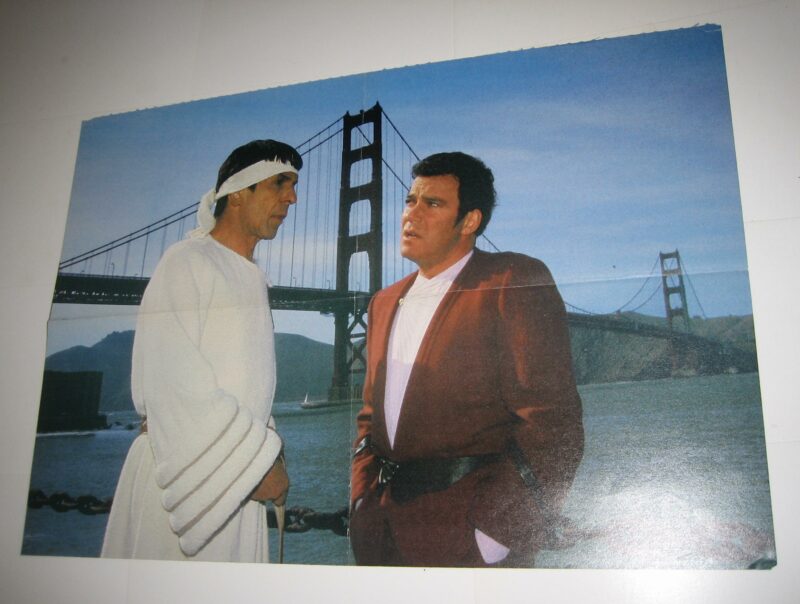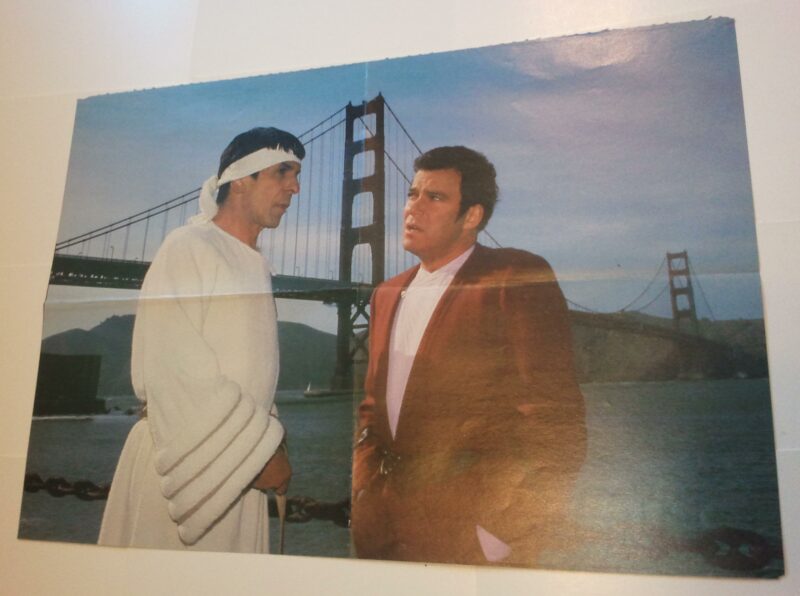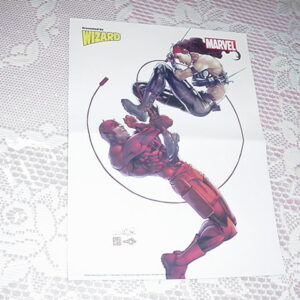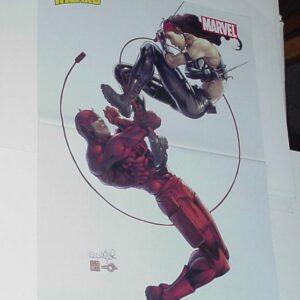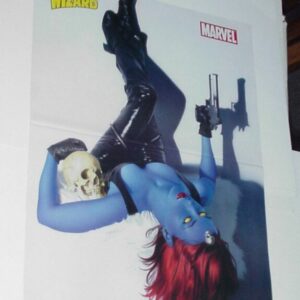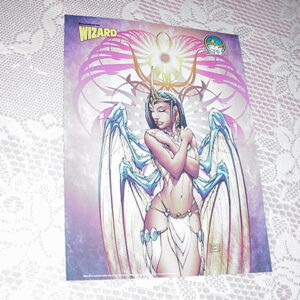Star Trek Poster #29 Spock and Captain Kirk on Earth! Voyage Home
$39.99
Description
Star Trek IV: The Voyage Home is a 1986 American science fiction film released by Paramount Pictures. It is the fourth feature film in the film series and completes the story arc begun in The Wrath of Khan and continued in The Search for Spock. Intent on returning home to Earth to face trial for their crimes, the former crew of the USS Enterprise finds the planet in grave danger from an alien probe attempting to contact now-extinct humpback whales. The crew travel to Earth’s past to find whales who can answer the probe’s call.
After directing The Search for Spock, cast member Leonard Nimoy was asked to direct the next feature, and given greater freedom regarding the film’s content. Nimoy and producer Harve Bennett conceived a story with an environmental message and no clear-cut villain. Dissatisfied with the first screenplay produced by Steve Meerson and Peter Krikes, Paramount hired The Wrath of Khan writer and director Nicholas Meyer. Meyer and Bennett divided the story between them and wrote different parts of the script, requiring approval from Nimoy, lead actor William Shatner, and Paramount.
Principal photography commenced on February 24, 1986. Unlike previous Star Trek films, The Voyage Home was shot extensively on location; many real settings and buildings were used as stand-ins for scenes set around and in the city of San Francisco. Special effects firm Industrial Light & Magic (ILM) assisted in postproduction and the film’s special effects. Few of the humpback whales in the film were real: ILM devised full-size animatronics and small motorized models to stand in for the real creatures.
The Voyage Home premiered on November 26, 1986, in North America, becoming the top-grossing film in the weekend box office. The film’s humor and unconventional story were well received by critics, fans of the series and the general audience. It was financially successful, earning $133 million worldwide.
The film earned several awards and four Academy Award nominations for its cinematography and audio. It was dedicated to the crew of the Space Shuttle Challenger, which broke up 72 seconds after takeoff on the morning of January 28, 1986. Principal photography for The Voyage Home began four weeks after Challenger and her crew were lost. A sequel titled Star Trek V: The Final Frontier was released on June 9, 1989.
Despite Shatner’s doubts, Nimoy and Bennett selected a time travel story in which the Enterprise crew encounters a problem that could only be fixed by something only available in the present day (the Star Trek characters’ past). They considered ideas about violin makers and oil drillers, or a disease that had its cure destroyed with the rainforests. “But the depiction of thousands of sick and dying people seemed rather gruesome for our light-hearted film, and the thought of our crew taking a 600-year round trip just to bring back a snail darter wasn’t all that thrilling,” explained Nimoy. The director read a book on extinct animals and conceived the storyline that was eventually adopted. Nimoy hit upon the idea of humpback whales after talking with a friend—their song added mystery to the story, and their size added logistical challenges the heroes would have to overcome.
When Kirk and Spock are traveling on a public bus, they encounter a punk rocker blaring his music on a boom box, to the discomfort of everyone around him. Spock takes matters into his own hands and performs a Vulcan nerve pinch. Part of the inspiration for the scene came from Nimoy’s personal experiences with a similar character on the streets of New York; “I was struck by the arrogance of it, the aggressiveness of it, and I thought if I was Spock I’d pinch his brains out!” On learning about the scene, Kirk Thatcher, an associate producer on the film, convinced Nimoy to let him play the role; Thatcher shaved his hair into a mohawk and bought clothes to complete the part. Credited as “punk on bus”, Thatcher (along with sound designer Mark Mangini) also wrote and recorded “I Hate You”, the song in the scene, and it was his idea to have the punk—rendered unconscious by the pinch—hit the stereo and turn it off with his face.
Leonard Simon Nimoy (born March 26, 1931) is an American actor, film director, poet, singer and photographer. Nimoy is best known for his role of Spock in the original Star Trek series (1966–1969), and in multiple film, television, and video game sequels. In 1965, he made his first appearance in the rejected Star Trek pilot, “The Cage,” and would go on to play the character of Mr. Spock until 1969, followed by seven feature films and guest slots in various sequels. His character of Spock had a significant cultural impact and garnered Nimoy three Emmy Award nominations; TV Guide named Spock one of the 50 greatest TV characters. More recently, he also had a recurring role in the science fiction series Fringe. Nimoy’s fame as Spock is such that both of his autobiographies, I Am Not Spock (1975) and I Am Spock (1995), were written from the viewpoint of sharing his existence with the character. Star Trek was broadcast from 1966 to 1969. Nimoy earned three Emmy Award nominations for his work on the program. He went on to reprise the Spock character in Star Trek: The Animated Series and two episodes of Star Trek: The Next Generation. The first six Star Trek movies feature the original Star Trek cast including Nimoy, who also directed two of the films. He played the elder Spock in the 2009 Star Trek movie and reprised the role in a brief appearance in the 2013 sequel, Star Trek Into Darkness, both directed by J. J. Abrams. In April 2010, Leonard Nimoy announced that he was retiring from playing the signature character of Star Trek’s Spock, citing both his advanced age and the desire to give Zachary Quinto the opportunity to enjoy full media attention with the Spock character. Nimoy still has the last pair of Spock’s ears he wore on the series, as a memento. He has said that the character of Spock, which he played twelve to fourteen hours a day, five days a week, influenced his personality in private life. Each weekend during the original run of the series, he would be in character throughout Saturday and into Sunday, behaving more like Spock than himself: more logical, more rational, more thoughtful, less emotional and finding a calm in every situation. It was only on Sunday in the early afternoon that Spock’s influence on his behavior would fade off and he would feel more himself again – only to start the cycle over Monday morning. Nimoy also introduced the Vulcan nerve pinch in an early Star Trek episode “The Enemy Within.” Initially, Spock was supposed to knock out an evil Kirk in the Engineering room by striking him on the back of the head. Nimoy felt that the action was not in keeping with the nature of Spock’s character, so he suggested the “pinch” as a non-violent alternative, suggesting that Vulcans have the ability to emit energy from their fingertips, which, if applied to the correct nerve cluster, could render a human unconscious. Nimoy explained this to the episode’s director and, according to Nimoy, the director had no idea what he was talking about. However, Nimoy would express relief in later interviews and appearances that when he explained the concept to William Shatner, he understood it immediately, and Nimoy credits Shatner’s reaction to the nerve pinch in the episode as what really sold it. In early scripts for Star Trek, the nerve pinch was referred to as the “F.S.N.P.”, which stood for “Famous Spock Neck Pinch.”
Nimoy had been dissatisfied with unpaid royalties from Star Trek and did not intend to reprise the role, so Spock was left out of the screenplay. Director Robert Wise, having been informed by his daughter and son-in-law that the film “would not be Star Trek” without Nimoy, sent Jeffrey Katzenberg to New York City to meet with Nimoy. Katzenberg gave Nimoy a check to make up for his lost royalties, and the actor attended the March 1978 press conference with the rest of the returning cast. Nimoy was dissatisfied with the script, and his meeting with Katzenberg led to an agreement that the final script would need Nimoy’s approval. Despite the financial issues, Nimoy said he was comfortable with being identified as Spock because it had a positive impact on his fame.
Spock, commonly Mr. Spock was first portrayed by Leonard Nimoy in the original Star Trek series, Spock also appears in the animated Star Trek series, a two-part episode of Star Trek: The Next Generation, eight of the Star Trek feature films, and numerous Star Trek novels, comics, and video games. In addition to this, numerous actors portrayed the various stages of Spock’s rapid growth due to the effects of the Genesis Planet in the 1984 Star Trek film Star Trek III: The Search For Spock. In the 2009 film Star Trek and its 2013 sequel Star Trek Into Darkness, Nimoy reprised his role alongside Zachary Quinto, who depicted a younger version of the character, existing within an alternate timeline, and Jacob Kogan playing Spock as a child.
Spock serves aboard the starship Enterprise, as science officer and first officer, and later as commanding officer of two iterations of the vessel. Spock’s mixed human-Vulcan heritage serves as an important plot element in many of the character’s appearances. Along with Captain James T. Kirk and Dr. Leonard “Bones” McCoy, he is one of the three central characters in the original Star Trek series and its films. After retiring from Starfleet, Spock serves as a Federation ambassador, contributing toward the easing of the strained relationship between the Federation and the Klingon Empire. In his later years, he serves as Federation ambassador to the Romulan Star Empire and becomes involved in the ill-fated attempt to save Romulus from a supernova.
The character was initially depicted as the USS Enterprise’s science officer for the original pilot, “The Cage” (1964). Although “The Cage” did not air, Spock’s eleven years of service under the command of Captain Christopher Pike are referred to and depicted in “The Menagerie” (1966) and other episodes. The character’s first broadcast appearance is in “The Man Trap” (1966), which introduces him as the ship’s science officer and first officer under Captain James T. Kirk (William Shatner).
Star Trek depicts a trio of Spock, Kirk, and Doctor Leonard McCoy (DeForest Kelley); while McCoy often acts as Kirk’s conscience, Spock offers the captain an emotionally detached, logical perspective. The character also offers an “outsider’s” perspective on “the human condition”.
Spock, as originally described in Gene Roddenberry’s 1964 pitch for Star Trek, is “probably half Martian, he has a slightly reddish complexion and semi-pointed ears”. Early versions had the character ingest energy through a plate in his stomach. Writer Samuel A. Peeples told Roddenberry these attributes made Spock too alien, and suggested “he should at least be half-human and have the problems of both sides”, believing the human traits made the character more interesting and able to comment on the human condition more believably. Spock’s home planet was changed because Roddenberry thought if the show was a success, humans might actually walk on Mars during the series’ run.
Roddenberry sought an alien-sounding name when he created “Spock”, and did not know until later of Dr. Benjamin Spock, the pediatrician and author. In the initial, rejected pilot, “The Cage” (1964), Spock is greenish yellow and from the planet Vulcan. After DeForest Kelley in 1964 turned down the role, Roddenberry’s second choice to portray the character was Adam West, who at the time happened to be busy working on the film Robinson Crusoe on Mars (1964), and as a result, turned to Nimoy, already known to him from a guest appearance in his pilot The Lieutenant. Nichelle Nichols was also considered for the role of Spock. After Roddenberry saw Nimoy’s thin face and sharp features, no other actors were considered.
The “pointy ears” worn by Nimoy while portraying Spock are a form of facial prosthesis, mainly composed from molded and painted syntactic foam, made by noted make-up artist John Chambers. The foam was made by filling a ceramic matrix with hollow particles called microballoons, which result in a low density prosthesis that is easily worn. However, the process of ungluing the ears was painful for Nimoy, and meant that he had to come in an hour and a half early before filming, and stay behind for a half hour each day after filming, to apply and remove the glued pieces. The pain and inconvenience were so great that when producer Robert H. Justman jokingly proposed plastic surgery, Nimoy momentarily considered doing so.
Nimoy recalled, more than a decade after the show’s cancellation: “The “Star Trek” phenomenon continues to amaze and confound me. It was incredible, and it still is, although it is gentler now than it used to be. For a time, it was hysterical – it was so wild I had to be very careful where I went. If I went to a restaurant, I had to plan my entrances and my exits so I wouldn’t be mobbed and hurt. Same thing in hotels and airports – any public place. It isn’t that hysterical any more, but it is still a potent force.”
NASA made Spock an informal mascot of the space agency.
Leonard Simon Nimoy (born March 26, 1931) is an American actor, film director, poet, singer, and photographer. Nimoy is best known for his role of Spock in the original Star Trek series (1966–69), and in multiple film, television, and video game sequels.
Nimoy began his career in his early twenties, teaching acting classes in Hollywood and making minor film and television appearances through the 1950s, as well as playing the title role in Kid Monk Baroni. Foreshadowing his fame as a semi-alien, he played Narab, one of three Martian invaders in the 1952 movie serial Zombies of the Stratosphere.
In 1953, he served in the United States Army. In 1965, he made his first appearance in the rejected Star Trek pilot, “The Cage,” and would go on to play the character of Mr. Spock until 1969, followed by eight feature films and guest slots in the various spin-off series. His character of Spock has had a significant cultural impact and garnered Nimoy three Emmy Award nominations; TV Guide named Spock one of the 50 greatest TV characters. After the original Star Trek series, Nimoy starred in Mission: Impossible for two seasons, hosted the documentary series In Search of…, and narrated Civilization IV, as well as making several well-received stage appearances. More recently, he also had a recurring role in the science fiction series Fringe.
Nimoy’s fame as Spock is such that both of his autobiographies, I Am Not Spock (1975) and I Am Spock (1995), were written from the viewpoint of sharing his existence with the character.
Spock’s Vulcan salute became a recognized symbol of the show and was identified with him. Nimoy created the sign himself from his childhood memories of the way kohanim (Jewish priests) held their hand when giving blessings. During an interview, he translated the Priestly Blessing which accompanied the sign and described it during a public lecture: “May the Lord bless and keep you and may the Lord cause his countenance to shine upon you. May the Lord be gracious unto you and grant you peace. The accompanying spoken blessing, ‘Live long and prosper'”.
Kirk, played by William Shatner, first appears in the broadcast pilot episode of Star Trek: The Original Series, “The Man Trap”, originally broadcast on September 8, 1966. Shatner continued in the role for the show’s three seasons, and later provided the voice of the animated version of Kirk in Star Trek: The Animated Series (1973–74). Shatner returned to the role for Star Trek: The Motion Picture (1979) and in six subsequent films. Chris Pine portrays a young version of the character in the 2009 reboot Star Trek film, with Jimmy Bennett playing Kirk as a child. Other actors have played the character in fan-created media, and the character has been the subject of multiple spoofs and satires. The character has been praised for his leadership traits, and also criticized for his relationships with women.
Kirk became Starfleet’s youngest captain when he received command of the USS Enterprise for a five-year mission, three years of which are depicted in the original Star Trek series.
William Shatner tried to imbue the character with qualities of “awe and wonder” absent from “The Cage”. He also drew upon his experiences as a Shakespearean actor to invigorate the character, whose dialogue at times is laden with jargon. Not only did Shatner take inspiration from Roddenberry’s suggestion of Hornblower, but also from Alexander the Great – “the athlete and the intellectual of his time” – whom Shatner had played for an unsold television pilot two years earlier. In addition, the actor based Kirk partly on himself because “the fatigue factor after weeks of daily filming is such that you try to be as honest about yourself as possible”. A comedy veteran, Shatner suggested making the show’s characters as comfortable working in space as they would be at sea, thus having Kirk be a humorous “good-pal-the-captain, who in time of need would snap to and become the warrior”. Changing the character to be “a man with very human emotions” also allowed for the development of the Spock character. Shatner wrote that “Kirk was a man who marveled and greatly appreciated the endless surprises presented to him by the universe … He didn’t take things for granted and, more than anything else, respected life in every one of its weird weekly adventure forms”.
Shatner did not expect Star Trek to become a success; when Star Trek was cancelled in 1969, Shatner assumed it would be the end of his association with the show. However, Shatner went on to voice Kirk in the animated Star Trek series, star in the first seven Star Trek films, and provide voice acting for several games.
William “Bill” Shatner (born March 22, 1931) is a Canadian actor, musician, singer, author, film director, spokesman and comedian. He gained worldwide fame and became a cultural icon for his portrayal of Captain James Tiberius Kirk, commander of the Federation starship USS Enterprise, in the science fiction television series Star Trek, from 1966 to 1969; Star Trek: The Animated Series from 1973 to 1974, and in seven of the subsequent Star Trek feature films from 1979 to 1994. He has written a series of books chronicling his experiences playing Captain Kirk and being a part of Star Trek, and has co-written several novels set in the Star Trek universe. He has also written a series of science fiction novels called TekWar that were adapted for television.
In his role as Kirk, Shatner famously kissed actress Nichelle Nichols (Lt. Uhura) in the November 22, 1968, Star Trek episode, “Plato’s Stepchildren.” The episode is popularly cited as the first example of an interracial kiss between a white man and a black woman on scripted television in the United States.
In 2006, Shatner was inducted into the Television Hall of Fame.
He has since worked as a musician, author, director and celebrity pitchman. From 2004 to 2008, he starred as attorney Denny Crane in the television dramas The Practice and its spin-off Boston Legal, for which he won two Emmy Awards and a Golden Globe Award. When asked during a March 1978 press conference about what it would be like to reprise the role, Shatner said, “An actor brings to a role not only the concept of a character but his own basic personality, things that he is, and both Leonard Nimoy and myself have changed over the years, to a degree at any rate, and we will bring that degree of change inadvertently to the role we recreate”.
Near mint condition.
